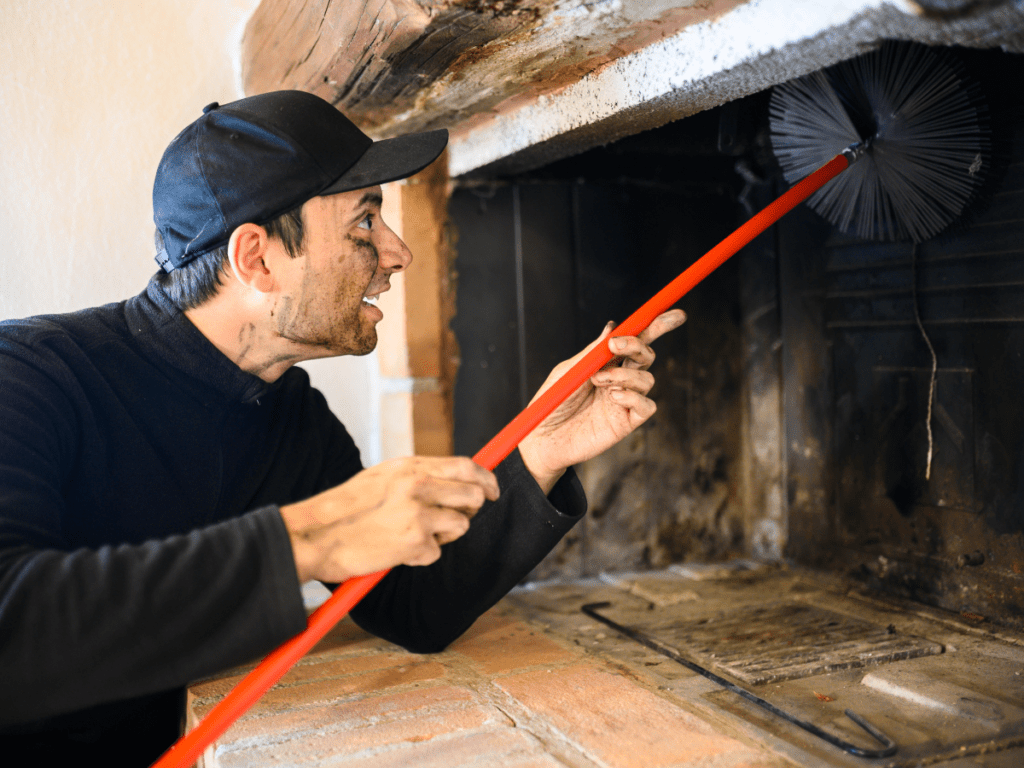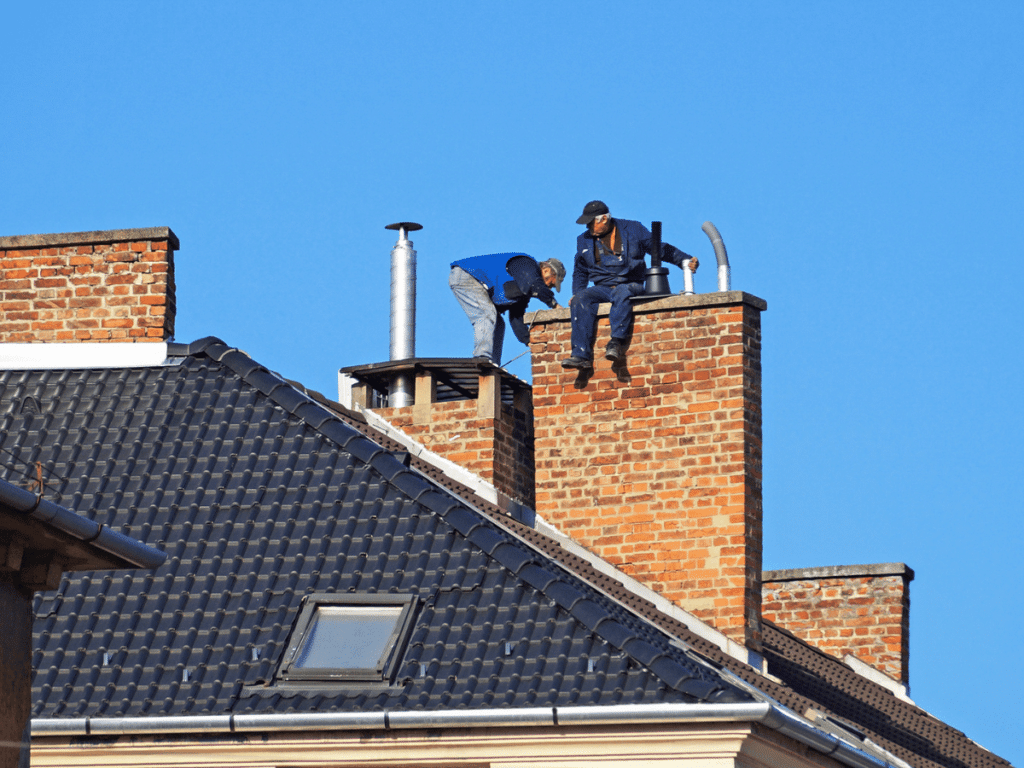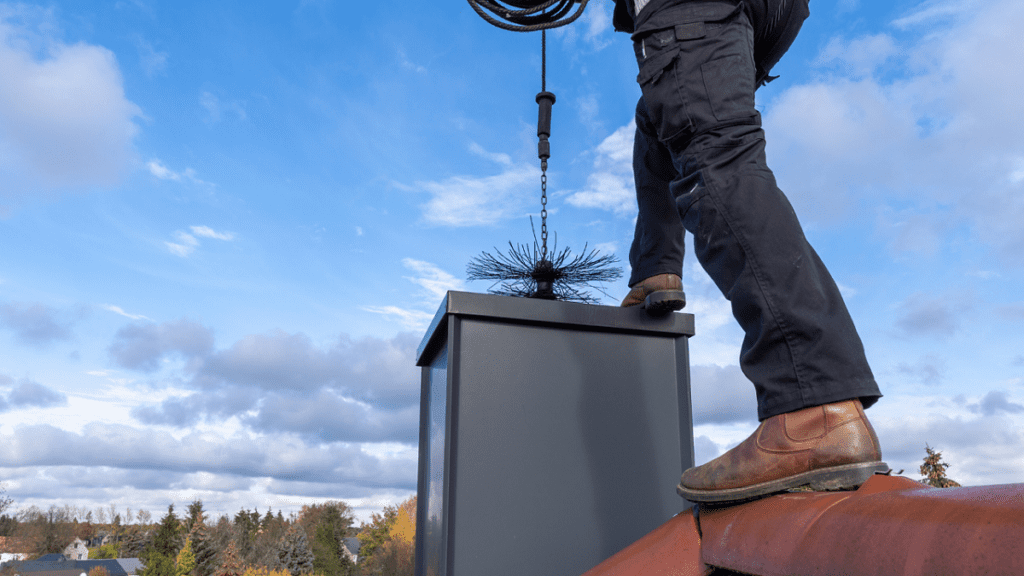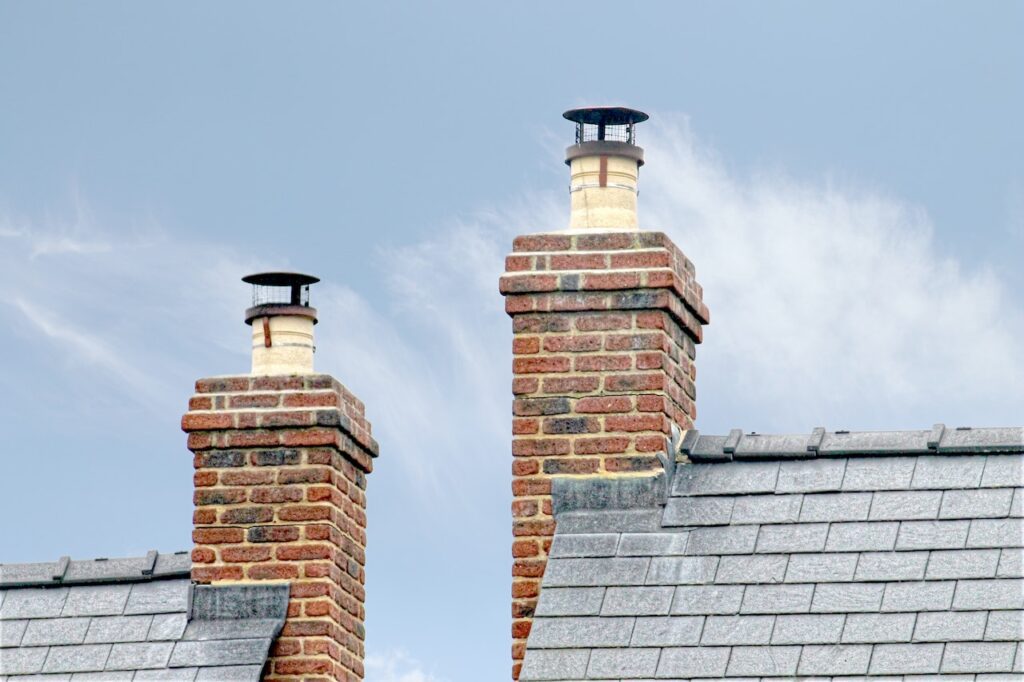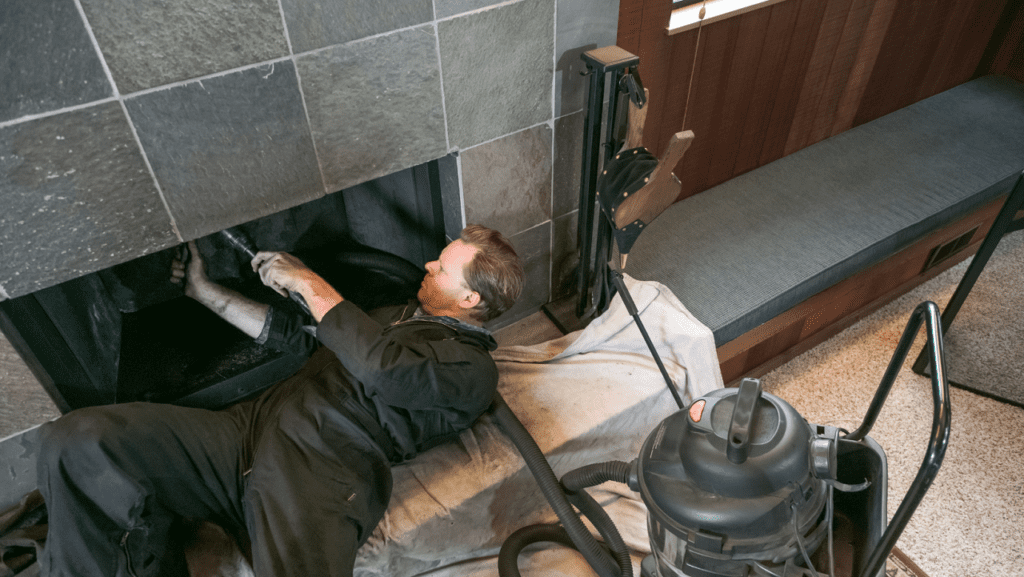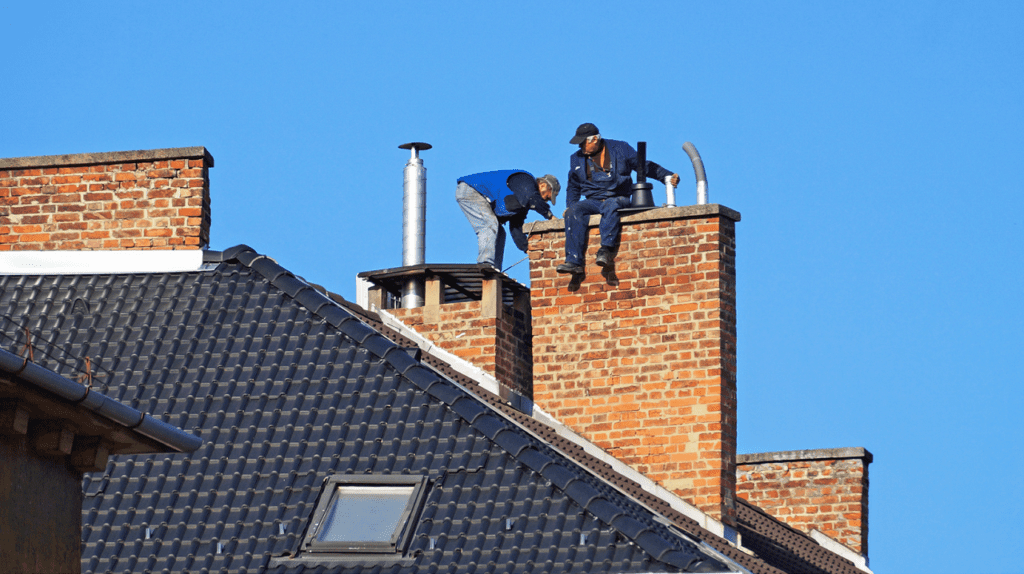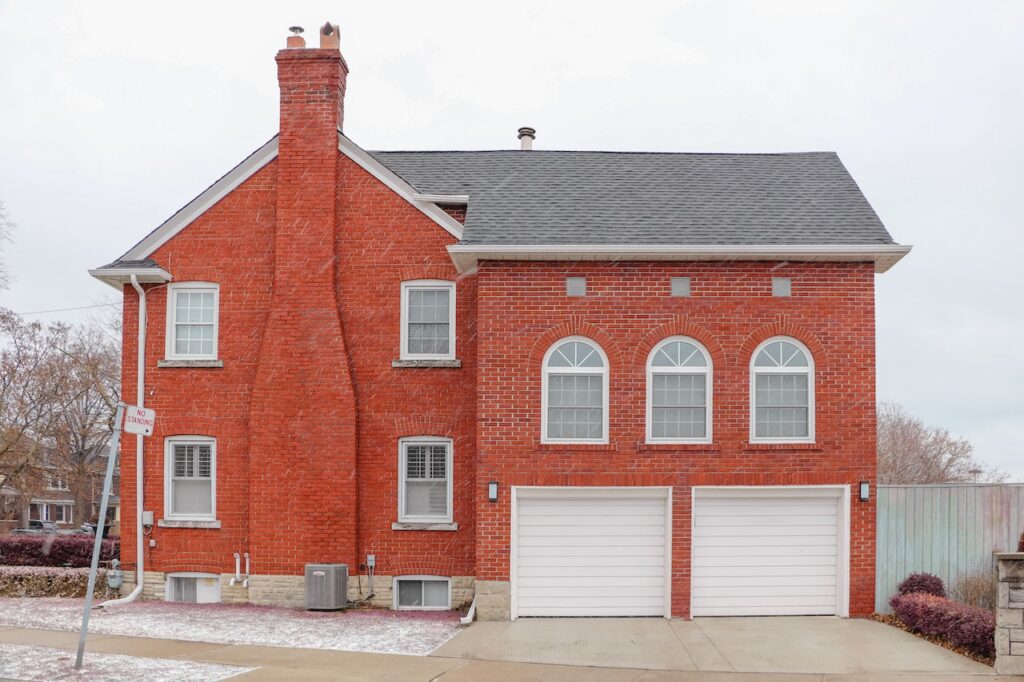
The Importance of Chimney Sweeping: A Brief History
Chimney sweeping is a profession that has been around for centuries and is still vital in today’s world. The importance of chimney sweeping can be traced back to England in the 16th century when coal became the main source of fuel for heating homes.
The use of coal caused a massive increase in air pollution and created a need for regular chimney cleaning to prevent the build-up of soot and other harmful substances. By the 18th century, chimney sweeping had become an established profession, with young boys, known as “climbing boys,” being sent up chimneys to clean them out.
This practice was later abolished due to unsafe working conditions and child labor laws. Today, chimney sweeping is still an important aspect of home maintenance.
Regular cleaning helps prevent dangerous chimney fires caused by excessive build-up of creosote, a highly flammable substance that accumulates within chimneys during normal use. Additionally, it ensures proper ventilation, which improves indoor air quality by expelling harmful gases like carbon monoxide out of your home.
Without regular maintenance, such as chimney cleaning, any number of problems can arise – from toxic carbon monoxide fumes leaking into your home or even structural damage caused by small animal nests or broken tiles. Now that we have covered the history and importance behind the profession let’s take a closer look at what it takes to become a qualified chimney sweep.
RELATED: Sweeping Away the Hazards: The Importance of Professional Chimney Sweep Services
The Chimney Sweep Profession
How to Become a Chimney Sweep
Becoming a chimney sweep is not as straightforward as other professions. There are no standard courses, certifications, or apprenticeships needed to start this career.
However, there are several ways to get started. One way is by working with an experienced chimney sweep and learning the trade from them.
This on-the-job training will give you hands-on experience in cleaning chimneys, inspecting them for potential hazards, and using the proper tools and equipment. Another way to become a chimney sweep is by enrolling in specialized training programs offered by some trade schools or vocational schools.
These programs can provide you with the necessary knowledge and skills needed for this profession. However, keep in mind that most clients prefer someone with experience rather than someone who has just completed a training program.
Tools and Equipment Used by Chimney Sweeps
Chimney sweeps use a variety of tools and equipment to clean chimneys effectively. The most basic tool used by sweeps is the wire brush on the end of a long handle that brushes away soot and debris from the inside of the flue.
However, there are also specialized tools used depending on the type of chimney being cleaned. For example, some chimneys have square or rectangular flues rather than round ones.
In such cases, rectangular brushes or scrapers are used instead of round wire brushes. Sweeps also use inspection cameras that can reach even further into the flue than their arms can reach alone.
They may also use vacuums to clean up debris as they work their way down through the flue. A licensed sweep should always come prepared with all necessary safety gear too!
Chimney Sweeping Process
Inspection and Assessment of the Chimney
Before beginning the cleaning process, a thorough inspection of the chimney is necessary to assess any potential issues or blockages. This includes checking for creosote buildup, which can lead to dangerous chimney fires.
The condition of the chimney’s structure and lining should also be assessed to ensure there are no cracks or damage that could compromise its effectiveness. In addition, the chimney sweep will check for blockages caused by debris such as leaves, twigs, or even small animals like birds or squirrels.
If any blockages are found, they will need to be removed before cleaning can begin. An inspection of the interior of the home may also be necessary to ensure that no damage has occurred due to improper ventilation.
Cleaning Techniques for Different Types of Chimneys
Different types of chimneys require different cleaning techniques depending on their materials, shape, and size. For example, a masonry chimney typically requires a more abrasive cleaning technique than a metal one. A professional sweep will choose an appropriate technique based on their expertise in evaluating your specific needs.
One common method used by professional sweeps is called “rodding,” which involves using flexible rods with attached brushes to scrub away soot and debris from inside the chimney. Another method is called “power sweeping,” which uses specially designed equipment that rotates brushes within the flue as vacuum-like suction pulls debris out through a hose.
Safety Precautions During the Cleaning Process
Ensuring safety during chimney sweeping is crucial both for homeowners and professionals alike. This includes wearing protective gear such as gloves and goggles when handling sooty materials in order to prevent injury or contamination from harmful chemicals present in creosote buildup. Additionally, it’s important for professionals to use proper equipment, such as ladders and harnesses, when working on rooftops or at high elevations.
A professional sweep will also take care to protect your furniture and flooring during the cleaning process to prevent any damage from falling debris or dust. By following these safety precautions and utilizing professional expertise, homeowners can enjoy a clean, safe, and efficient chimney for years to come.
Common Chimney Issues
Creosote Buildup
One of the most common issues that homeowners face with their chimneys is creosote buildup. Creosote is a highly flammable substance that forms when wood or other fossil fuels are burned. Over time, this substance can accumulate in the chimney and create a blockage, which can cause smoke to back up into your home or even start a chimney fire.
The best way to prevent creosote buildup is to have your chimney cleaned regularly by a professional chimney sweep. During the cleaning process, the sweep will use specialized tools and techniques to remove any creosote buildup from inside the chimney, ensuring that it’s free from any obstructions.
Blockages Caused by Debris or Animals
Another common issue with chimneys is blockages caused by debris or animals. Leaves, twigs, and other debris can accumulate in the chimney over time and create an obstruction that prevents smoke from escaping properly.
Additionally, birds, squirrels, and other small animals may see your chimney as an ideal nesting spot. To prevent blockages caused by debris or animals, you should have your chimney inspected regularly.
A professional sweep will be able to identify any potential sources of blockages and remove them before they become an issue. Moreover, you may want to consider installing a screen or cap on top of your chimney to keep out birds and other critters.
Cracks or Damage to the Chimney Structure
One more common issue with chimneys is cracks or other types of damage to the structure itself. Over time, exposure to weathering elements can cause cracks in masonry chimneys or rust on metal ones.
These types of structural issues can be dangerous as they compromise the integrity of the entire system. If you notice any signs of damage such as loose bricks or metal corrosion, be sure to have your chimney inspected by a professional.
They will be able to evaluate the extent of the damage and recommend any necessary repairs. Remember, addressing these issues early on can help prevent more serious problems down the road.
Benefits of Regular Chimney Sweeping
Improved Air Quality in the Home
One of the major benefits of regular chimney sweeping is improved air quality in your home. When you burn wood or other materials, particles and toxins are released into the air.
Over time, these particles can accumulate in your chimney and make their way into your home. This can lead to poor indoor air quality, which can have a negative impact on your health.
Regular chimney sweeping helps to remove these particles and toxins from your chimney, reducing the amount that makes its way into your home. This means that the air you breathe will be cleaner and healthier, which is especially important if anyone in your household suffers from respiratory issues like asthma or allergies.
Prevention of Fire Hazards
Another important benefit of regular chimney sweeping is that it helps to prevent fire hazards. When creosote builds up inside your chimney, it can become a serious fire hazard. Creosote is highly flammable and can ignite easily if it comes into contact with a spark or flame.
Regular chimney sweeping removes creosote buildup, reducing the risk of a dangerous chimney fire. Additionally, having a clean and well-maintained chimney reduces the likelihood of other types of fires caused by heating equipment malfunctions.
Increased Efficiency and Lifespan of Heating Appliances
In addition to improving indoor air quality and preventing fire hazards, regular chimney sweeping also increases the efficiency and lifespan of heating appliances like wood stoves or fireplace inserts. When there is creosote buildup inside your chimney, it restricts airflow, which reduces efficiency.
This means that you will need to use more fuel to achieve the same level of heat output. Having a clean and well-maintained chimney through regular sweeping visits from professionals who know how to get rid of all forms of creosotes on chimney walls will ensure maximum efficiency and save you money on fuel costs.
Additionally, allowing creosote to build up over time can cause damage to your heating appliances, leading to costly repairs or even replacement. Regular chimney sweeping helps to extend the lifespan of these appliances, saving you money in the long run.
Fun Facts About Chimney Sweeping
Chimney sweeping has been around for centuries and has developed some interesting superstitions and traditions along the way. Here are some fun facts you might not know about chimney sweeps:
The Superstitions Surrounding Chimney Sweeps
In many cultures, chimney sweeps are considered to be symbols of good luck. The origins of this belief can be traced back to medieval times when fire was a serious threat to homes and towns.
It was believed that if a chimney sweep came into contact with a fire, the flames would be extinguished. This led to the idea that having a chimney sweep in your presence would ward off fires and other bad luck.
Another superstition surrounding chimney sweeps is that having one attend your wedding is good luck. This tradition dates back to the 16th century when King George II’s coach was stopped by a runaway horse.
The only person who could stop the horse was a passing chimney sweep who proceeded to save the king’s life. In gratitude, the king declared that all sweeps were lucky and should be treated as such.
Famous Fictional Characters Who Were Chimney Sweeps
Chimney sweeps have also made their way into popular culture as beloved fictional characters. One of the most famous is Bert from Disney’s Mary Poppins, who sings “Chim Chim Cher-ee” while performing his duties atop London rooftops.
Another famous fictional character who worked as a chimney sweep is Tom Dacre from William Blake’s poem “The Chimney Sweeper.” The poem tells the tragic story of young Tom Dacre, who is sold by his father to work as a chimney sweep. Despite his hardships, Tom dreams of escaping into paradise where he can play and sing with other children.
These fun facts show how much history and culture surrounds an often-overlooked profession like chimney sweeping. From superstitions to famous fictional characters, chimney sweeps have left a lasting impact on our society.
RELATED: Clearing the Air: Chimney Sweep Cost Services Explained
Frequently Asked Questions
What did chimney sweeps do?
Chimney sweeps are professionals who clean and maintain chimneys to ensure their safe operation. They remove soot, creosote, and potential obstructions, inspect for damage, and may also provide advice on the proper use and maintenance of the chimney.
How often should a chimney be swept?
The frequency of chimney sweeping depends on usage, but generally, it’s recommended to have your chimney swept at least once a year, especially before the colder months when fireplaces are used more frequently.
What does it mean to chimney sweep?
The term “chimney sweep” refers to a professional who is trained and often certified to clean, inspect, and repair chimneys. This work is critical for maintaining safe operation and preventing fire hazards.
What is the difference between chimney cleaning and sweeping?
Chimney cleaning and sweeping are often used interchangeably, but there can be a difference: sweeping typically refers to the process of removing soot and creosote from the chimney’s interior, while cleaning may involve a more thorough service, including inspection for damage, cleaning the chimney cap, and ensuring the chimney is in good overall condition.
Why was chimney sweeping bad?
Chimney sweeping was often considered bad historically because it was associated with poor working conditions, especially during the Industrial Revolution when young children, known as climbing boys, were employed to clean chimneys due to their small size. These children often faced dangerous and unhealthy conditions, including the risk of getting stuck, exposure to carcinogenic soot, and other physical harms.
What is a fact about chimney sweep?
A fact about chimney sweeps is that they have been considered symbols of good luck since the 1700s, especially in the United Kingdom. This belief stems from various legends, including one where a sweep saved King George II’s life, leading to the tradition of inviting a sweep to weddings for good luck.
Conclusion
Chimney sweeping is not only an important profession but also a crucial aspect of home maintenance that should be taken seriously. Chimney sweeps play a vital role in ensuring that our homes are safe and free from fire hazards.
The profession requires specialized skills, tools, and equipment to perform the job effectively. During the chimney sweeping process, chimney sweeps conduct a thorough inspection of the chimney to identify any issues that may pose a risk to your home. They use different techniques to clean the chimney depending on its type and condition.
Chimney sweeps also take safety precautions during the cleaning process to ensure that they do not cause any damage or harm.
Regular chimney sweeping has several benefits, including improved air quality in the home, prevention of fire hazards, and increased efficiency and lifespan of heating appliances. It is recommended that homeowners have their chimneys cleaned at least once a year by professional chimney sweeps.
In addition to maintaining your home’s safety, hiring a certified professional chimney sweep can help you avoid expensive repairs or replacement costs down the line. So don’t neglect your fireplace or stove; give it some love so it can continue to keep you warm for years to come!


